Seismic Monitoring at the Farnsworth CO2-EOR Field Using Time-Lapse Elastic-Waveform Inversion of 3D-3C VSP Data
Abstract
1. Introduction
2. Method
2.1. Building the Baseline Velocity Models
2.2. Elastic-Waveform Inversion of 3D-3C VSP Data
2.3. Time-Lapse Inversion Strategies
3. Site Characterization
4. Results and Discussion
5. Conclusions
Author Contributions
Funding
Acknowledgments
Conflicts of Interest
References
- Lumley, D.; Adams, D.C.; Meadows, M.; Cole, S.; Wright, R. 4D seismic data processing issues and examples. In Proceedings of the 73rd Annual International Meeting, SEG, Expanded Abstracts, Dallas, TX, USA, 26–31 October 2003; pp. 1394–1397. [Google Scholar]
- Huang, L. Geophysical Monitoring for Geologic Carbon Storage; AGU-Wiley Monograph; John Wiley & Sons: Hoboken, NJ, USA, 2022. [Google Scholar]
- Ajo-Franklin, J.B.; Minsley, B.J.; Daley, T.M. Applying compactness constraints to differential traveltime tomography. Geophysics 2007, 72, R67–R75. [Google Scholar] [CrossRef]
- Daley, T.M.; Myer, L.; Peterson, J.E.; Majer, E.L.; Hoversten, G.M. Time-lapse crosswell seismic and VSP monitoring of injected CO2 in a brine aquifer. Environ. Geol. 2008, 54, 1657–1665. [Google Scholar] [CrossRef]
- Zhang, Z.; Huang, L. Double-difference elastic-waveform inversion with prior information for time-lapse monitoring. Geophysics 2013, 78, R259–R273. [Google Scholar] [CrossRef]
- Virieux, J.; Operto, S. An overview of full-waveform inversion in exploration geophysics. Geophysics 2009, 74, WCC1–WCC26. [Google Scholar] [CrossRef]
- Asnaashari, A.; Brossier, R.; Garambois, S.; Audebert, F.; Thore, P.; Virieux, J. Time-lapse seismic imaging using regularized full-wave-form inversion with a prior model: Which strategy? Geophys. Prospect. 2015, 63, 78–98. [Google Scholar] [CrossRef]
- Raknes, E.B.; Arntsen, B. A numerical study of 3D elastic time-lapse full-waveform inversion using multicomponent seismic data. Geophysics 2015, 80, R303–R315. [Google Scholar] [CrossRef]
- Egorov, A.; Pevzner, R.; Bóna, A.; Glubokovskikh, S.; Puzyrev, V.; Tertysh-nikov, K.; Gurevich, B. Time-lapse full-waveform inversion of vertical seismic profile data: Workflow and application to the CO2CRC Otway project. Geophys. Res. Lett. 2017, 44, 7211–7218. [Google Scholar] [CrossRef]
- Kamei, R.; Lumley, D. Full waveform inversion of repeating seismic events to estimate time-lapse velocity changes. Geophys. J. Int. 2017, 209, 1239–1264. [Google Scholar] [CrossRef]
- Liu, X.; Zhu, T.; Ajo-Franklin, J. Understanding Subsurface Fracture Evolution Dynamics Using Time-Lapse Full Waveform Inversion of Continuous Active-Source Seismic Monitoring Data. Geophys. Res. Lett. 2023, 50, e2022GL101739. [Google Scholar] [CrossRef]
- Li, Q.; Wang, F.; Wang, Y.; Zhou, C.; Chen, J.; Forson, K.; Miao, R.; Su, Y.; Zhang, J. Effect of reservoir characteristics and chemicals on filtration property of water-based drilling fluid in unconventional reservoir and mechanism disclosure. Environ. Sci. Pollut. Res. 2023, 30, 55034–55043. [Google Scholar] [CrossRef] [PubMed]
- Liu, X.; Huang, L.; Feng, Z.; El-Kaseeh, G.; Will, R.; Balch, R. Efficient 3-D velocity model building using joint inline and crossline plane-wave wave-equation migration velocity analyses. Geophys. J. Int. 2021, 225, 37–53. [Google Scholar] [CrossRef]
- Liu, X.; Liu, Y.; Khan, M. Fast least-squares reverse time migrationof VSP free-surface multiples with dynamic phase-encoding schemes. Geophysics 2018, 83, S321–S332. [Google Scholar] [CrossRef]
- Carcione, J.; Picotti, S.; Cavallini, F.; Santos, J. Numerical test of the Schoenberg-Muir theory. Geophysics 2012, 77, C27–C35. [Google Scholar] [CrossRef]
- Woodward, M.J.; Nichols, D.; Zdraveva, O.; Whitfield, P.; Johns, T. A decade of tomography. Geophysics 2008, 73, VE5–VE11. [Google Scholar] [CrossRef]
- Taillander, C.; Noble, M.; Chauris, H.; Calandra, H. First-arrival traveltime tomography based on the adjoint-state method. Geophysics 2009, 74, WCB1–WCB10. [Google Scholar] [CrossRef]
- Routh, P.; Krebs, J.; Lazaratos, S.; Baumstein, A.; Lee, S.; Cha, Y.H.; Downey, N.; Hinkley, D.; Anderson, J. Encoded simultaneous source full wavefield inversion for spectrally shaped marine streamer data. In Proceedings of the 81st Annual International Meeting, SEG, Expanded Abstracts, San Antonio, TX, USA, 18–23 September 2011; pp. 2433–2438. [Google Scholar]
- Fei, T.W.; Luo, Y.; Yang, J.; Liu, H.; Qin, F. Removing false images in reverse time migration: The concept of de-priming. Geophysics 2015, 80, S237–S244. [Google Scholar] [CrossRef]
- Chi, B.; Gao, K.; Huang, L. Least-squares reverse time migration guided full-waveform inversion. In Proceedings of the 87th Annual International Meeting, SEG, Expanded Abstracts, Houston, TX, USA, 24–29 September 2017; pp. 1471–1475. [Google Scholar]
- Gao, K.; Huang, L. Acoustic- and elastic-waveform inversion with total generalized p-variation regularization. Geophys. J. Int. 2019, 218, 933–957. [Google Scholar] [CrossRef]
- Czoski, P. Geologic Characterization of the Morrow B Reservoir in Farnsworth Unit, TX Using 3D VSP Seismic, Seismic Attributes, and Well Logs. Master’s Thesis, New Mexico Tech, Socorro, NM, USA, 2014. [Google Scholar]
- Rickett, J.; Lumley, D.E. Cross-equalization data processing for time-lapse seismic reservoir monitoring: A case study from the Gulf of Mexico. Geophysics 2001, 66, 1015–1025. [Google Scholar] [CrossRef]
- Wang, Z.; Cates, M.E.; Langan, R.T. Seismic monitoring of a CO2 flood in a carbonate reservoir: A rock physics study. Geophysics 1998, 63, 1604–1617. [Google Scholar] [CrossRef]

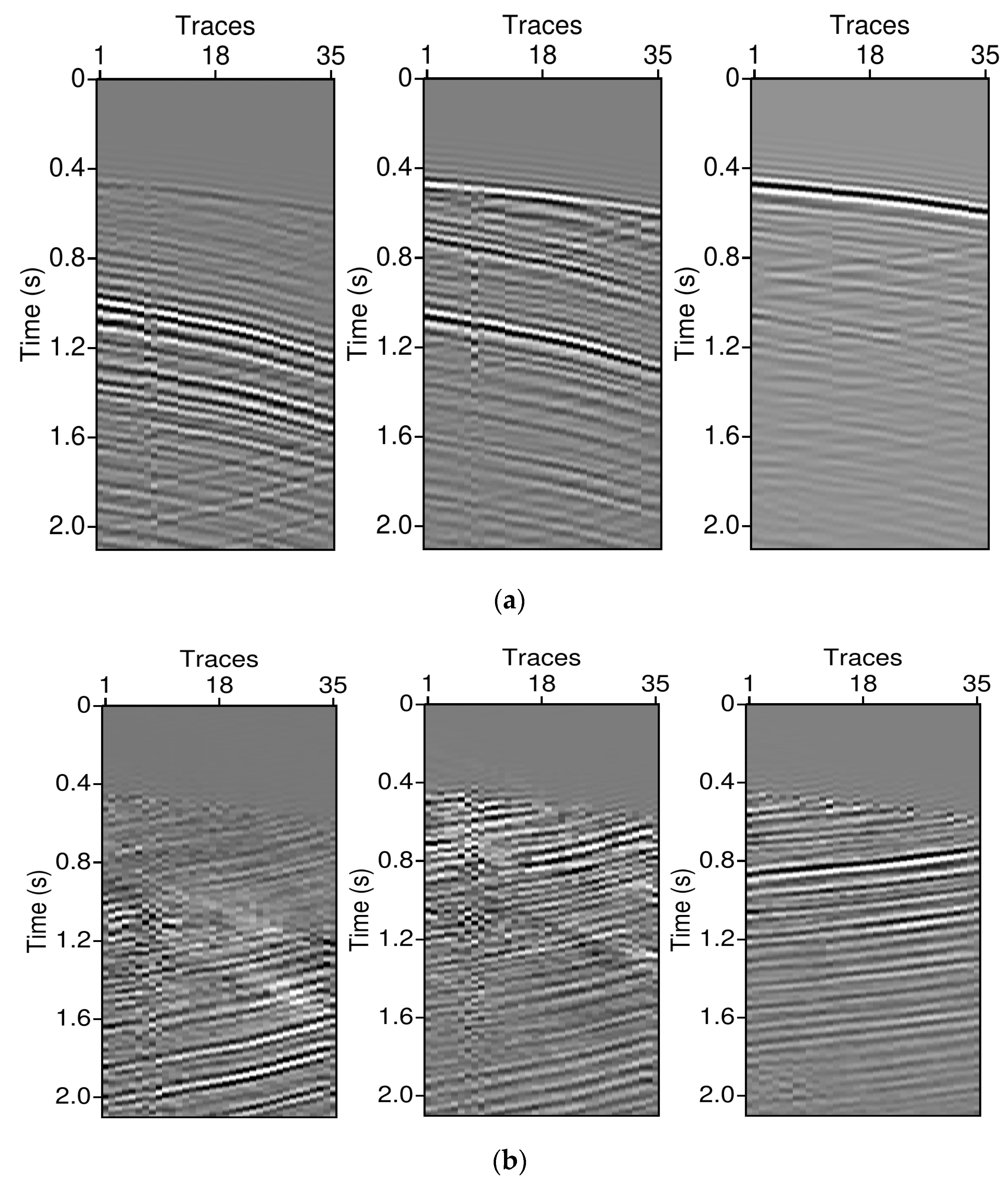
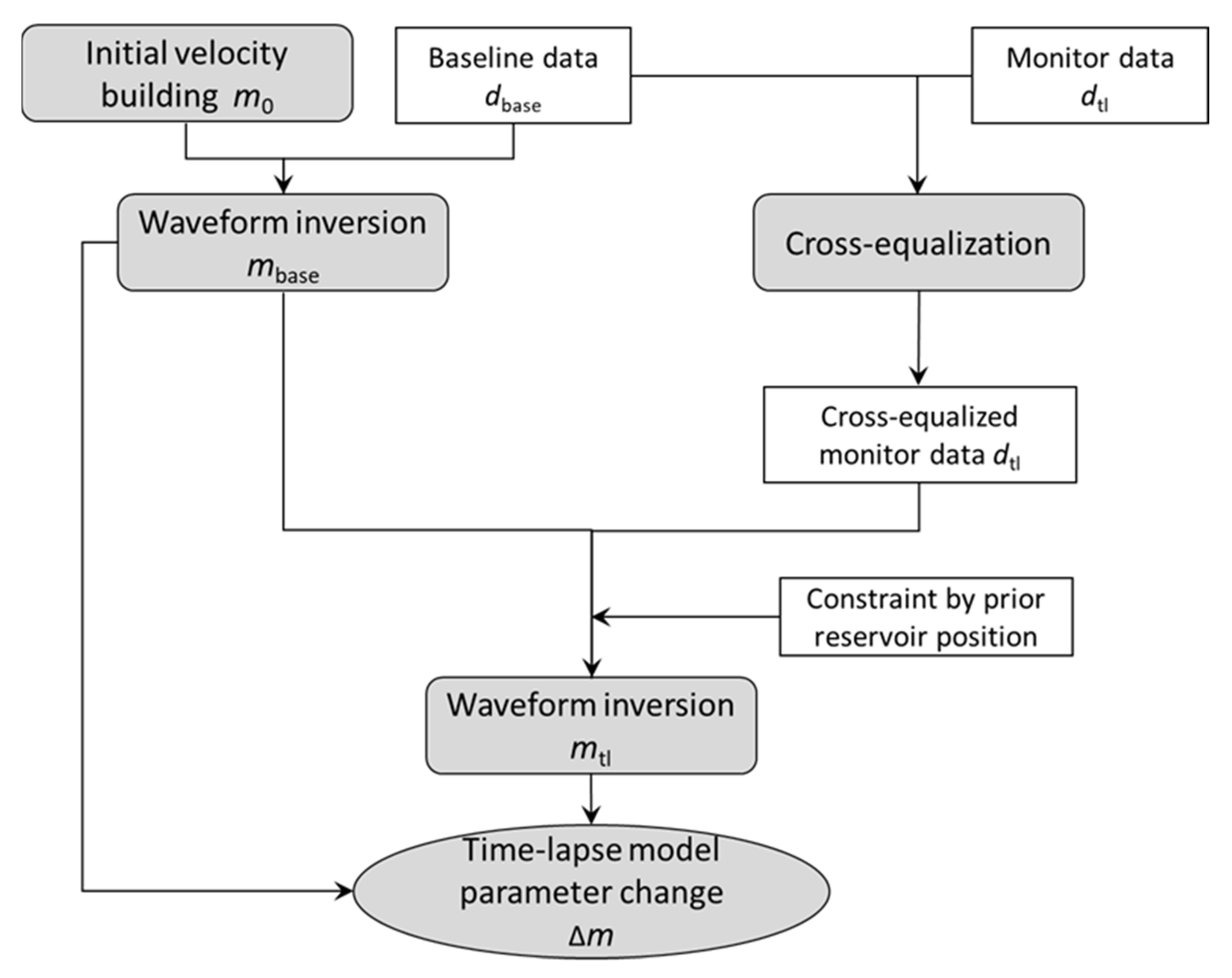
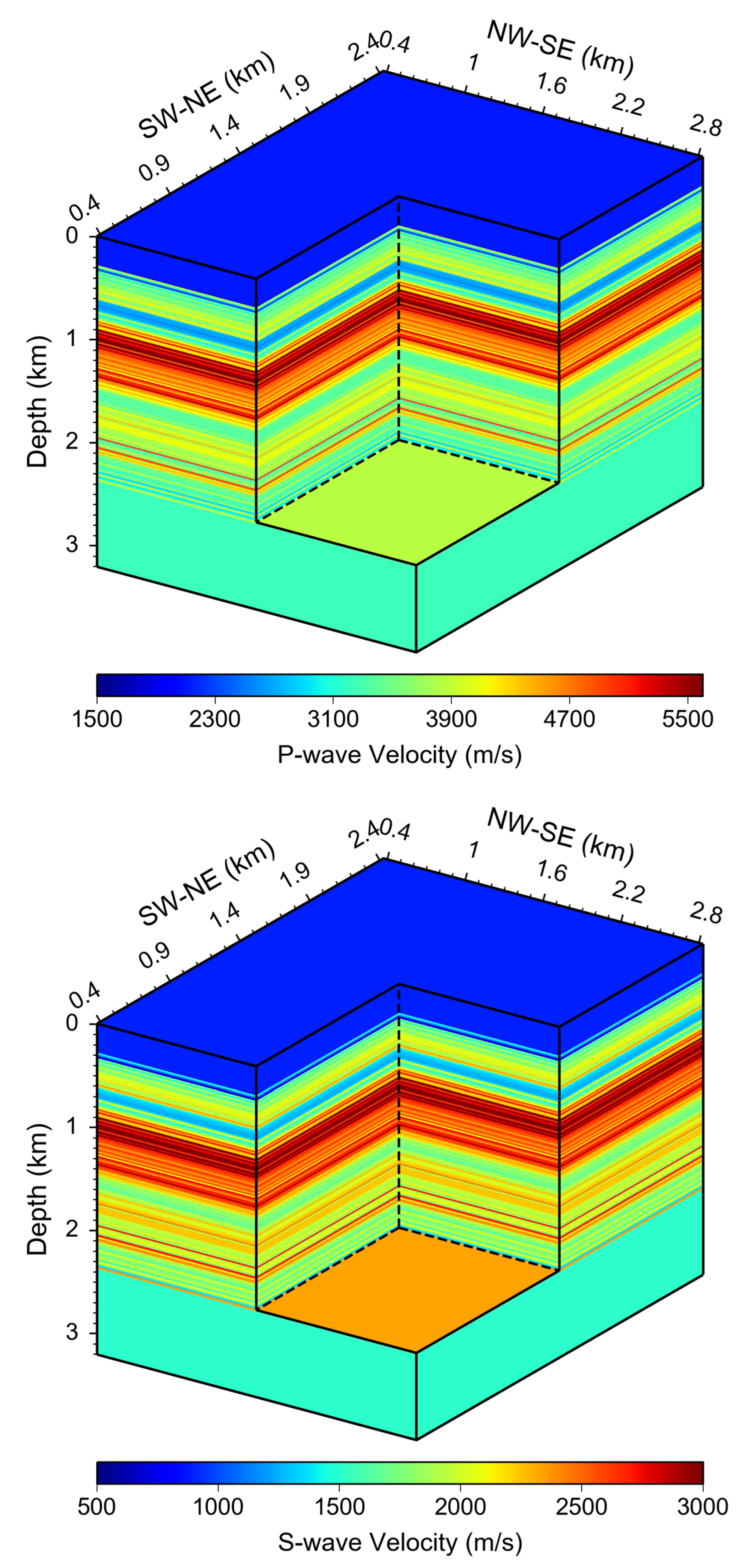

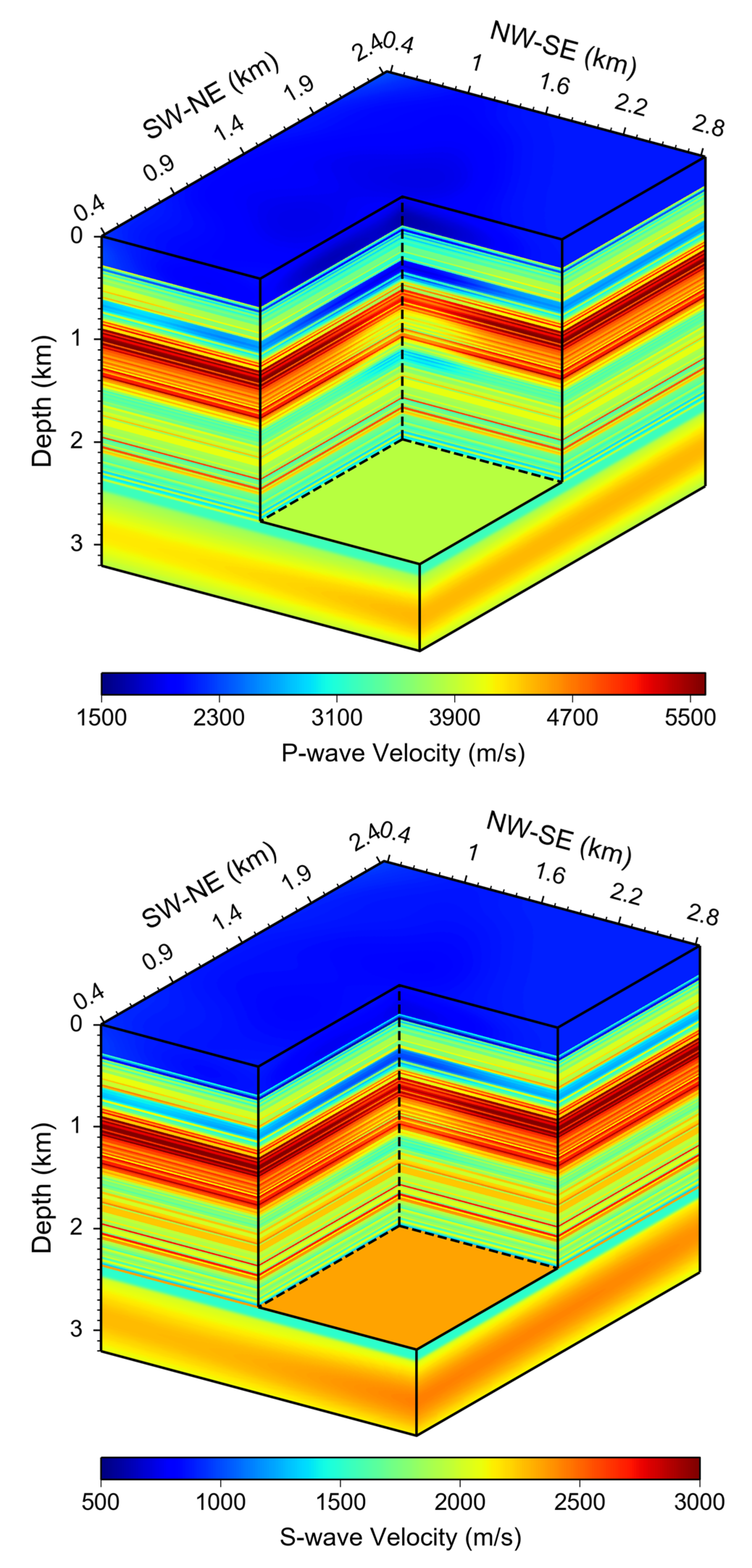
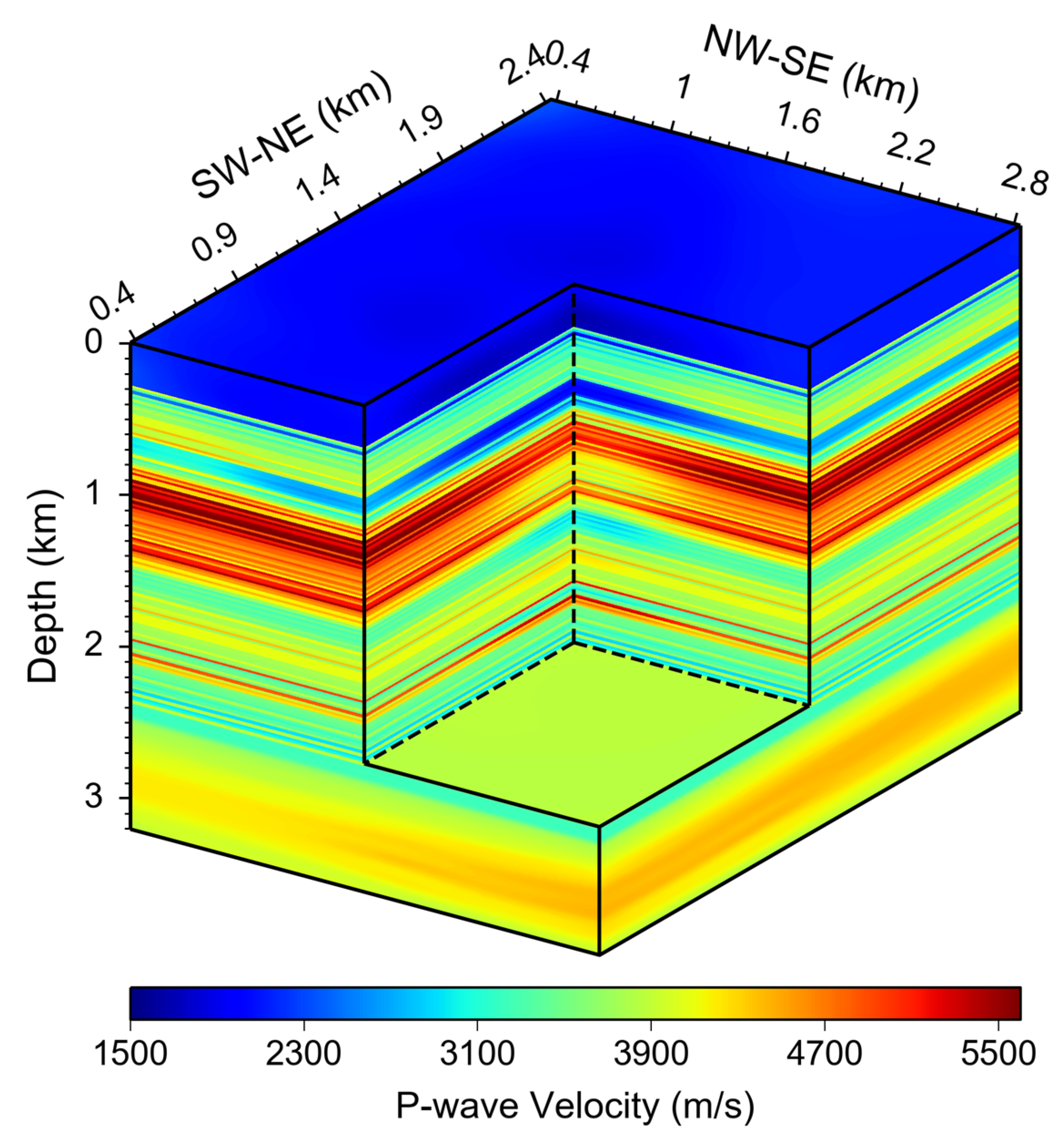
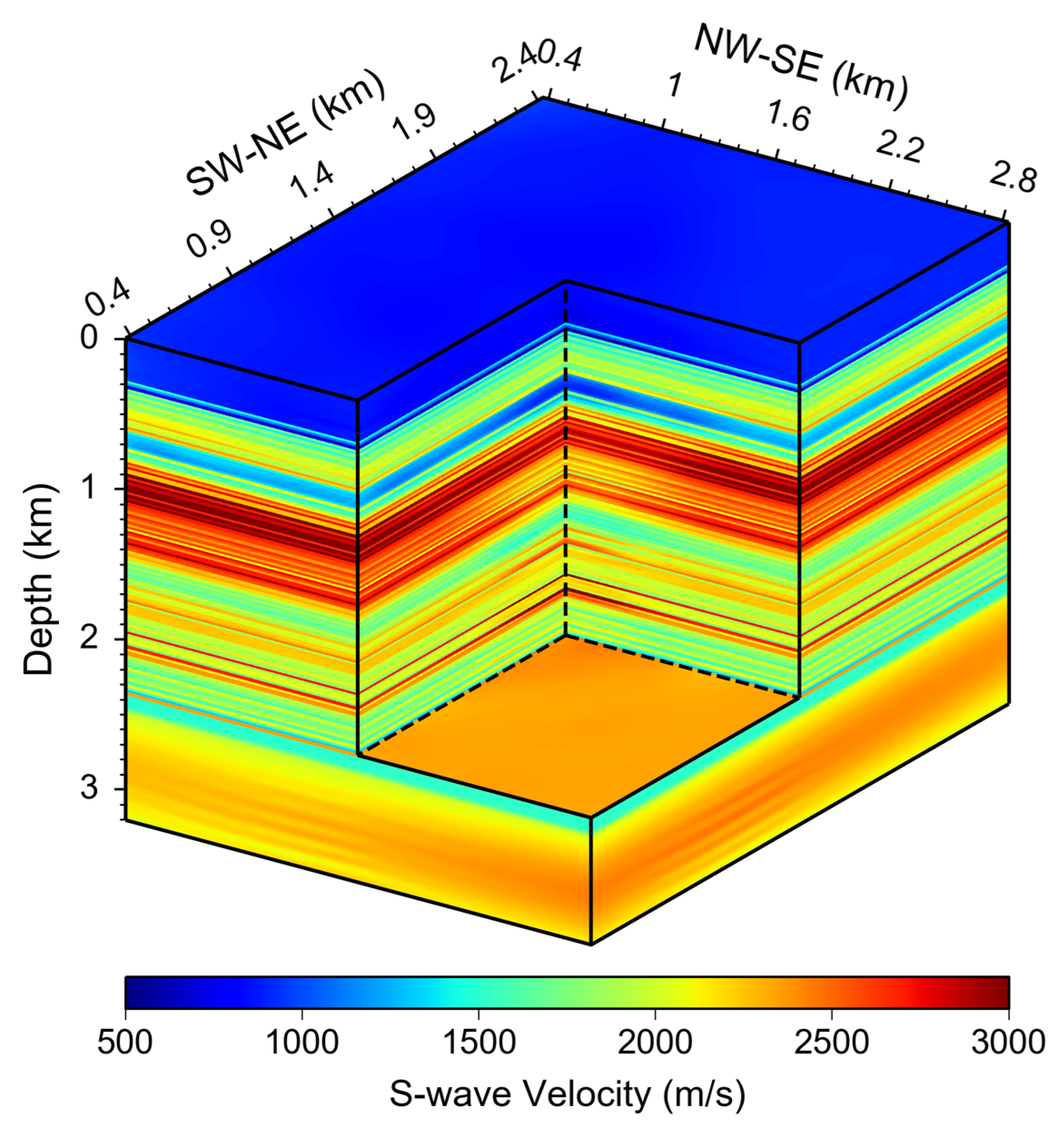

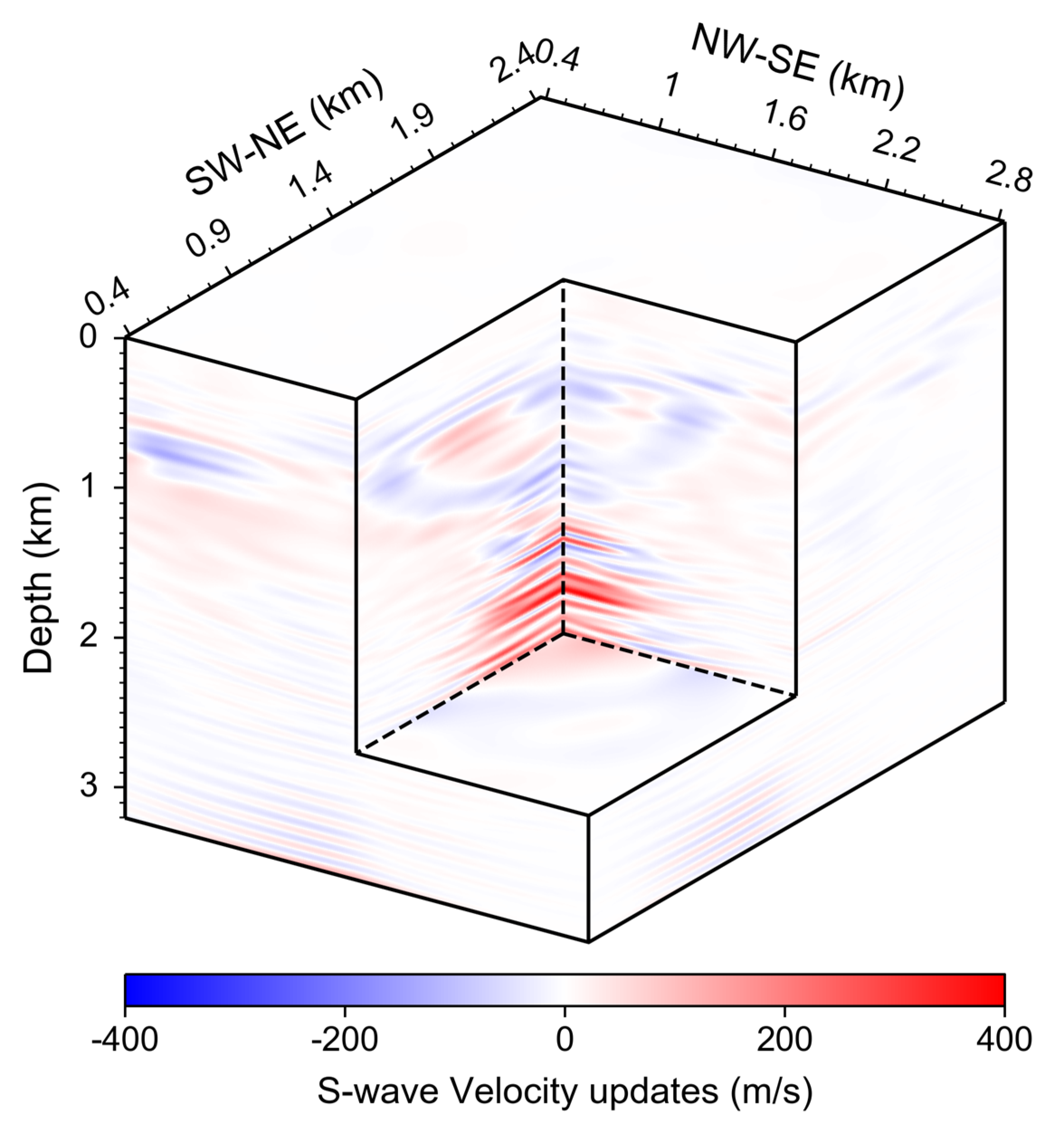
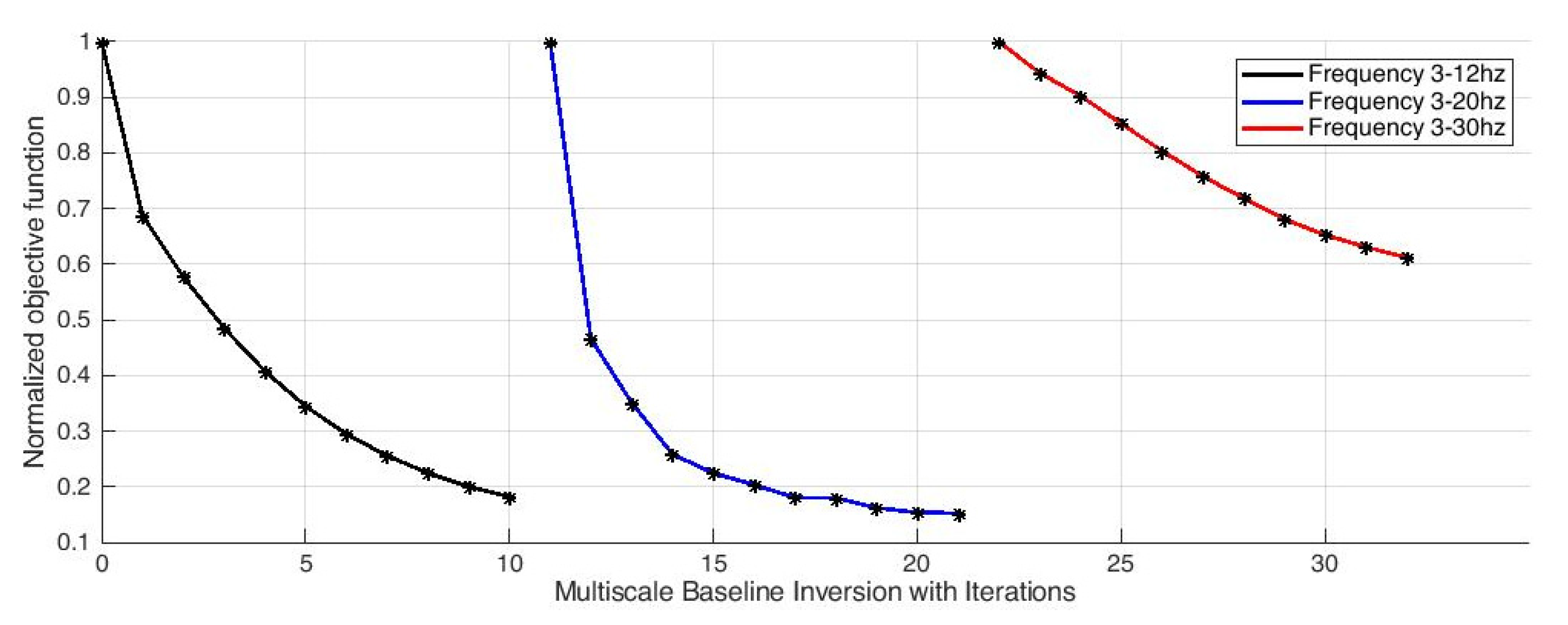
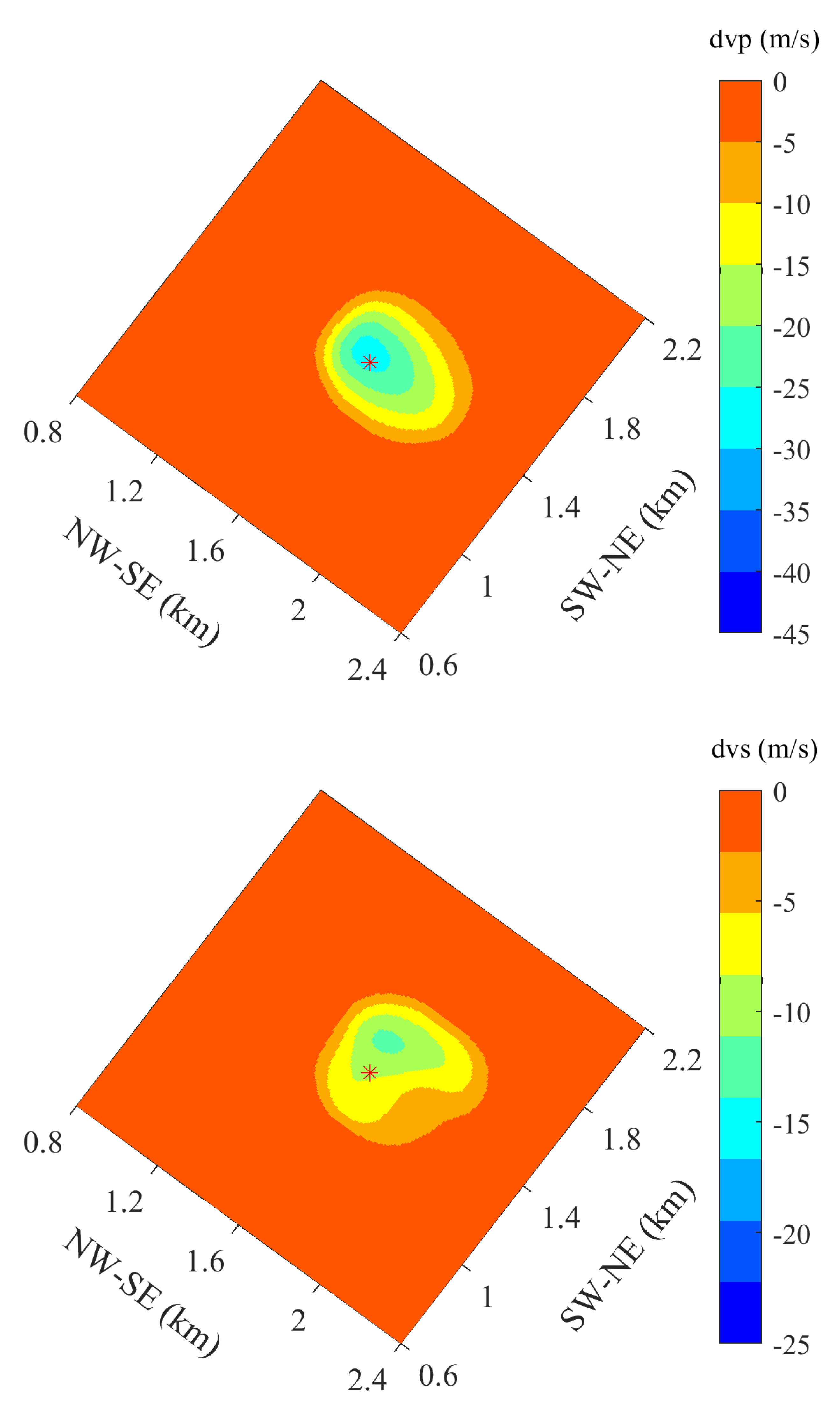
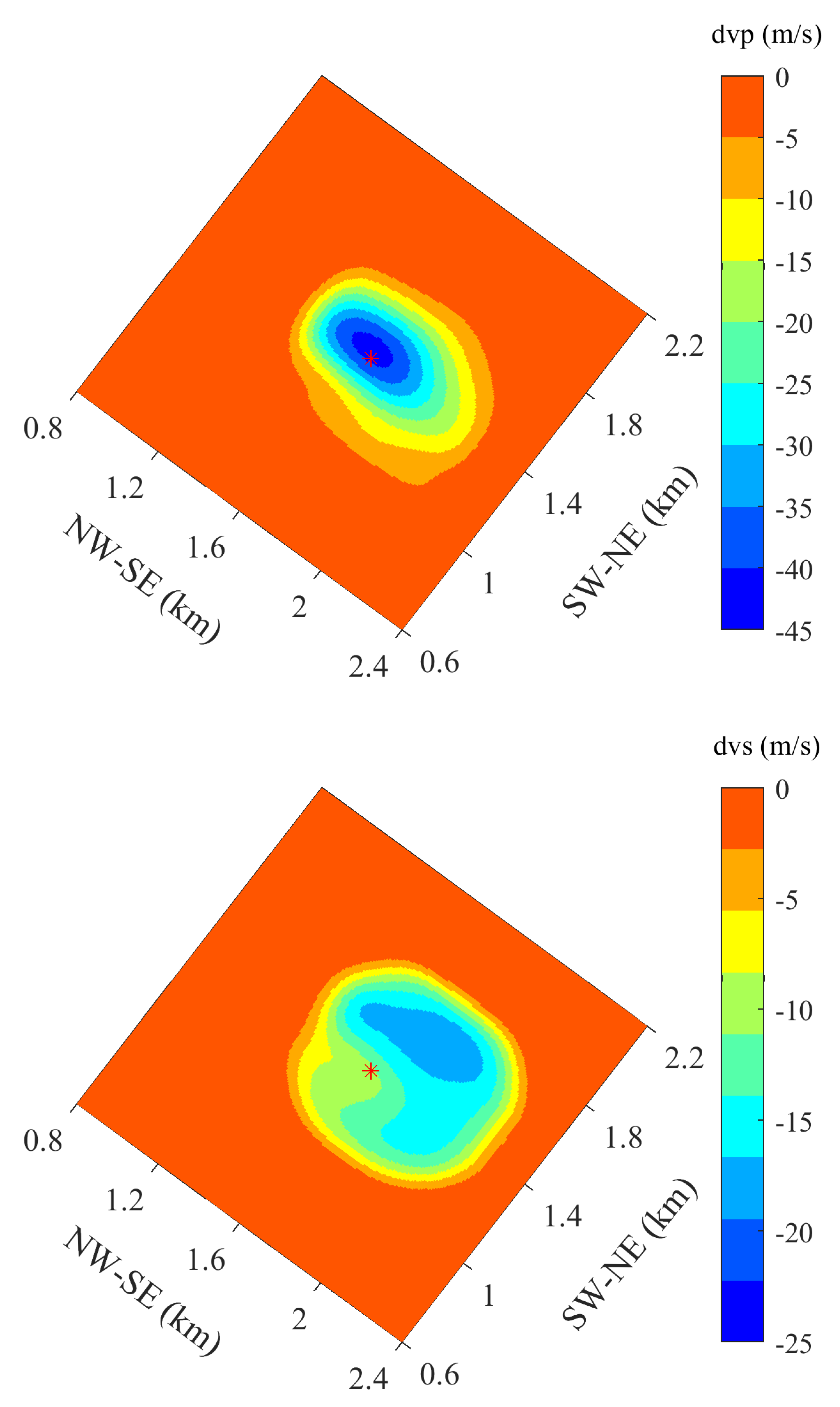
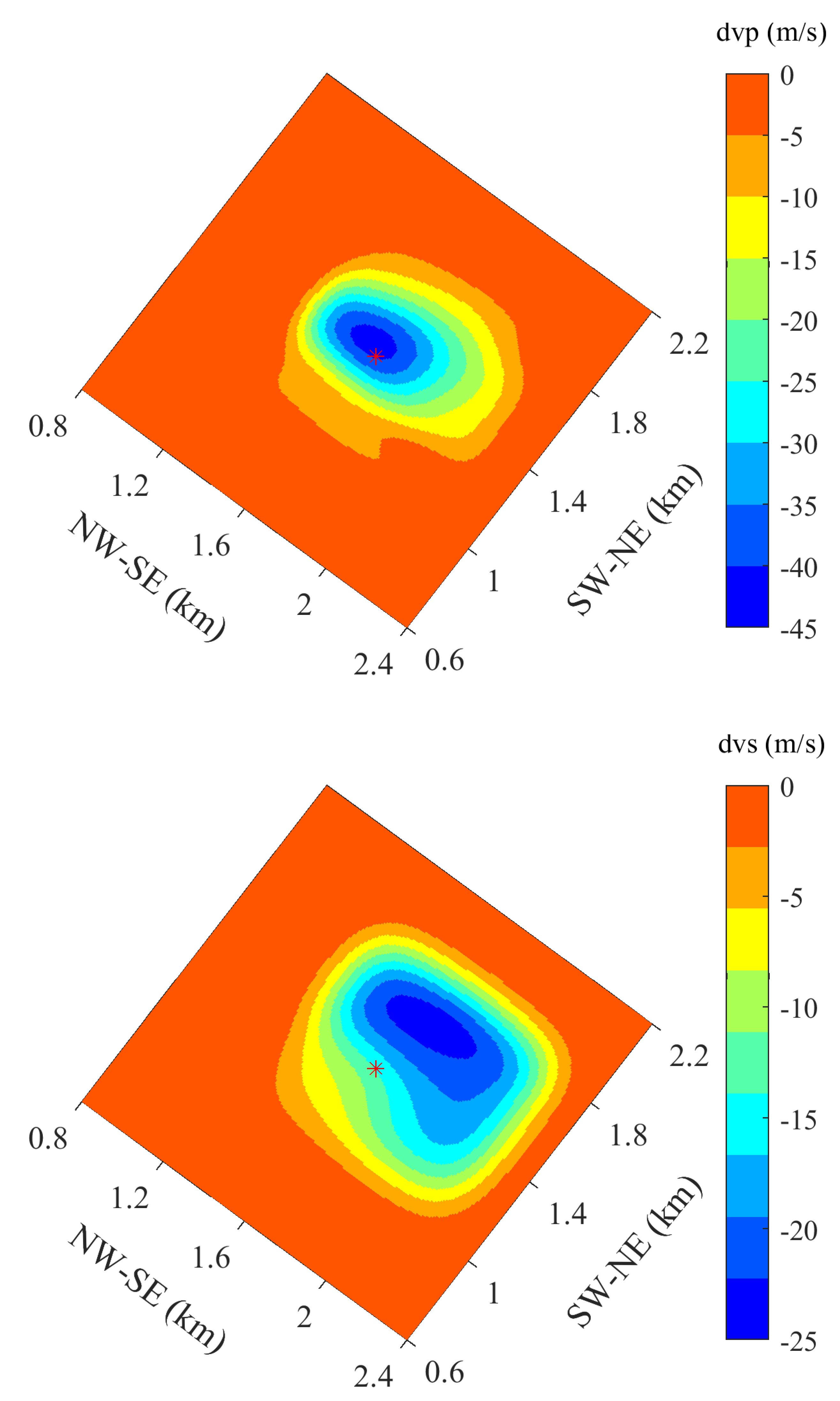
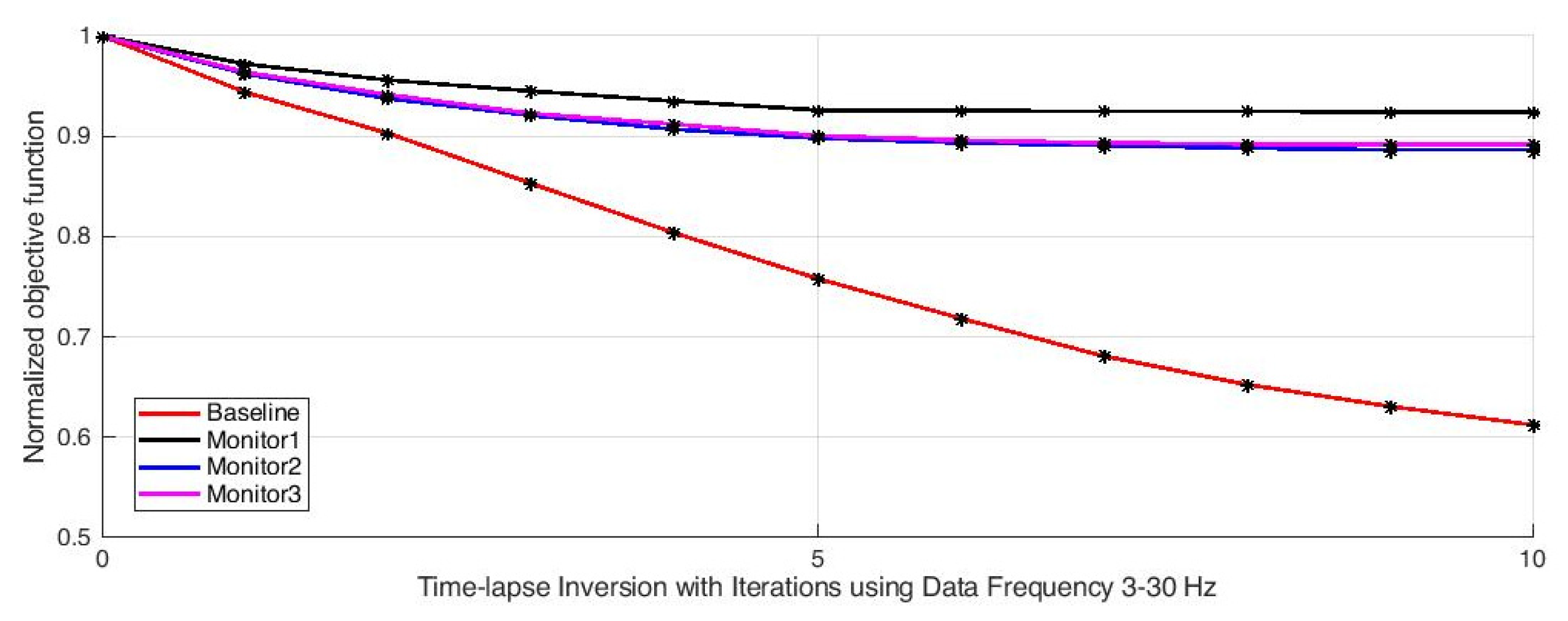
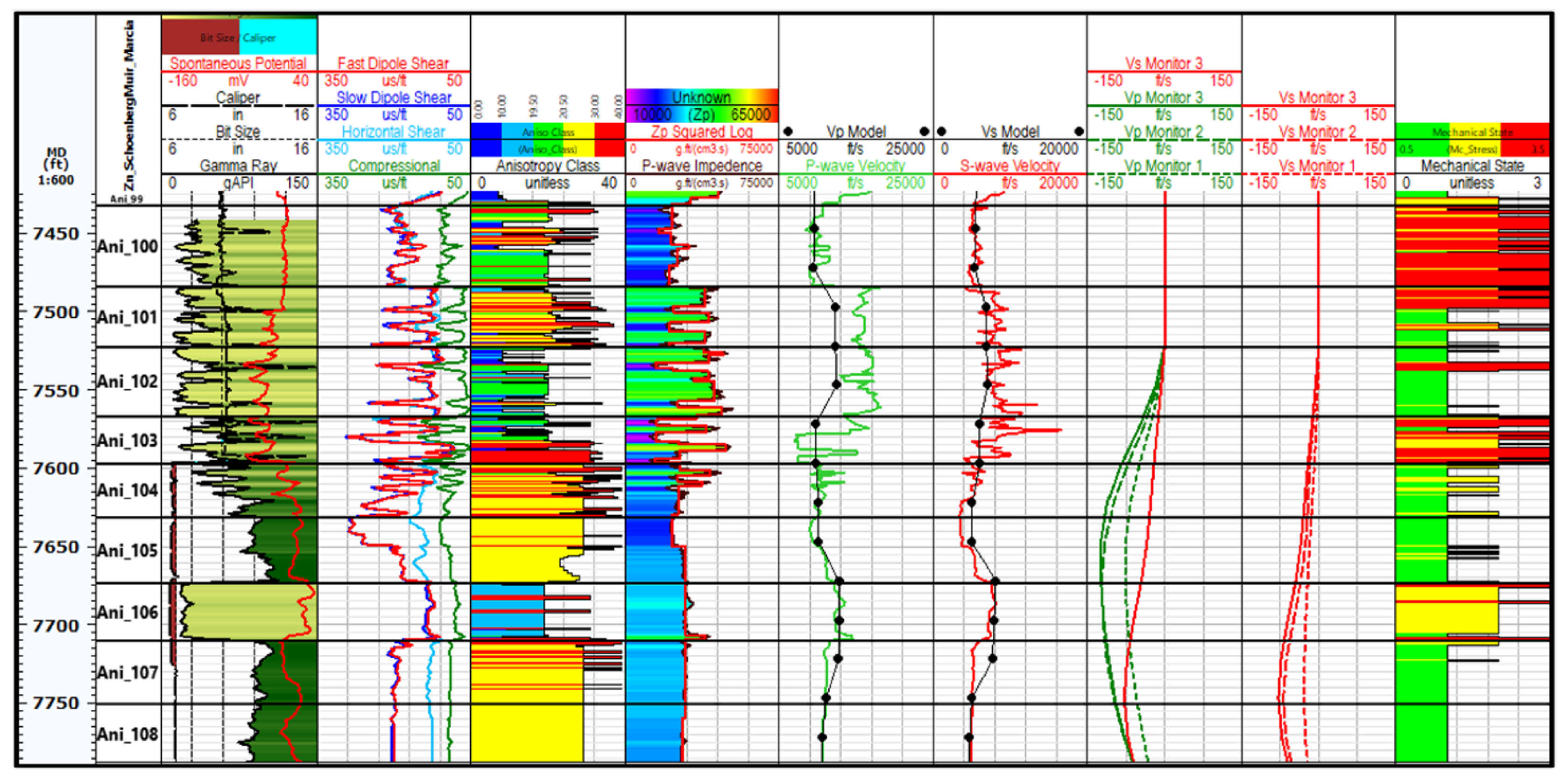
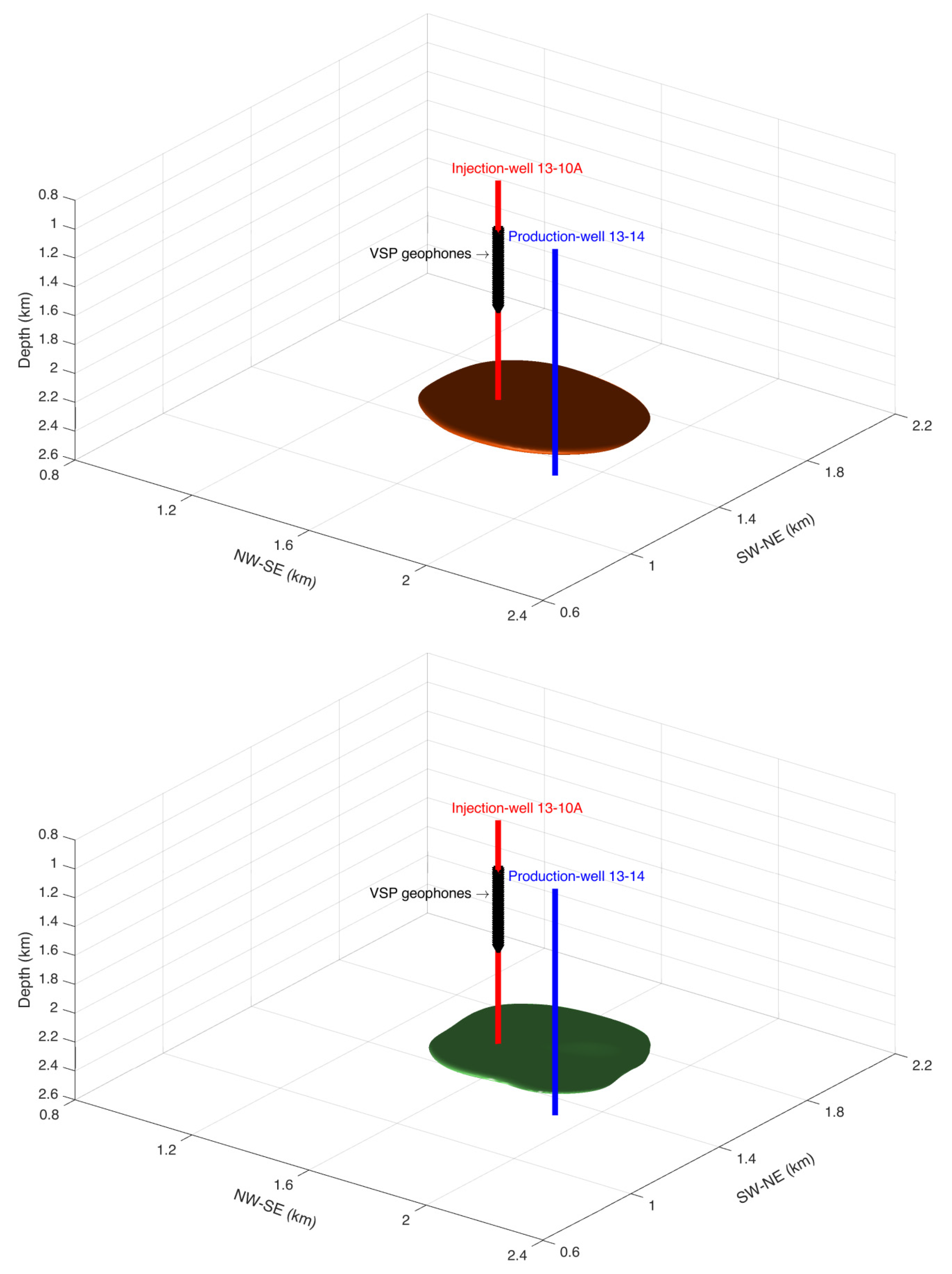
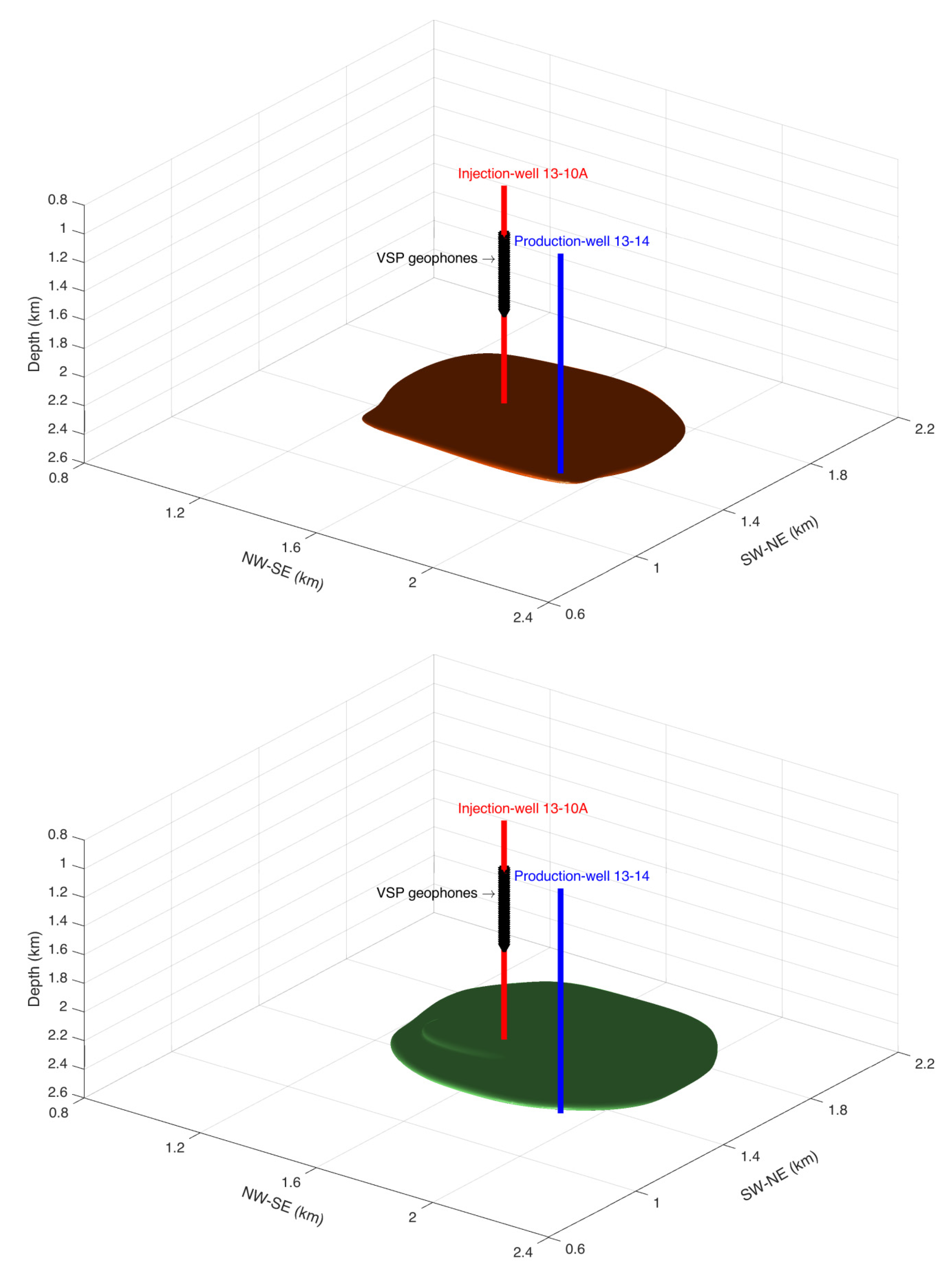
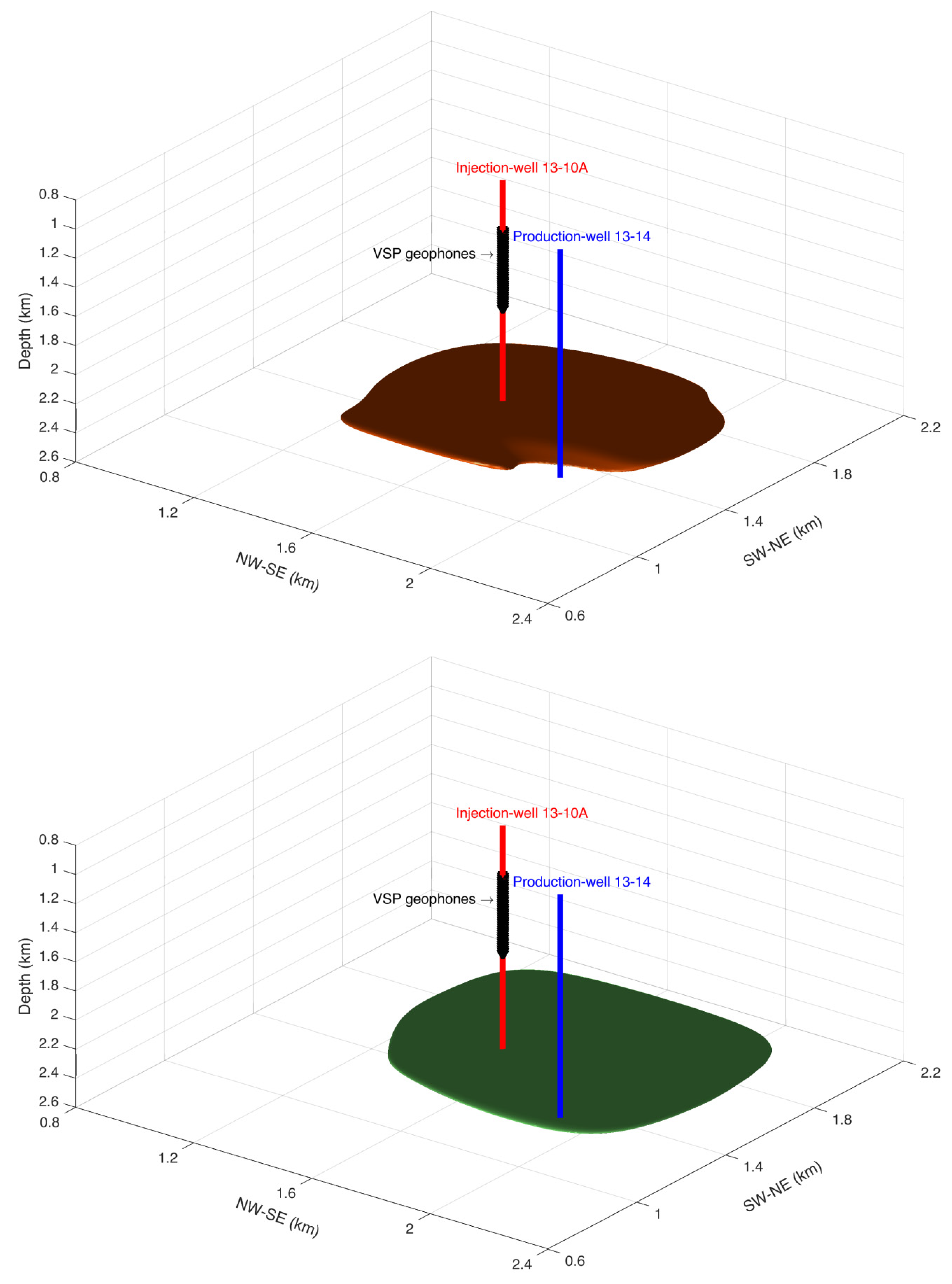
Disclaimer/Publisher’s Note: The statements, opinions and data contained in all publications are solely those of the individual author(s) and contributor(s) and not of MDPI and/or the editor(s). MDPI and/or the editor(s) disclaim responsibility for any injury to people or property resulting from any ideas, methods, instructions or products referred to in the content. |
© 2023 by the authors. Licensee MDPI, Basel, Switzerland. This article is an open access article distributed under the terms and conditions of the Creative Commons Attribution (CC BY) license (https://creativecommons.org/licenses/by/4.0/).
Share and Cite
Liu, X.; Huang, L.; Gao, K.; Bratton, T.; El-Kaseeh, G.; Ampomah, W.; Will, R.; Czoski, P.; Cather, M.; Balch, R.; et al. Seismic Monitoring at the Farnsworth CO2-EOR Field Using Time-Lapse Elastic-Waveform Inversion of 3D-3C VSP Data. Energies 2023, 16, 3939. https://doi.org/10.3390/en16093939
Liu X, Huang L, Gao K, Bratton T, El-Kaseeh G, Ampomah W, Will R, Czoski P, Cather M, Balch R, et al. Seismic Monitoring at the Farnsworth CO2-EOR Field Using Time-Lapse Elastic-Waveform Inversion of 3D-3C VSP Data. Energies. 2023; 16(9):3939. https://doi.org/10.3390/en16093939
Chicago/Turabian StyleLiu, Xuejian, Lianjie Huang, Kai Gao, Tom Bratton, George El-Kaseeh, William Ampomah, Robert Will, Paige Czoski, Martha Cather, Robert Balch, and et al. 2023. "Seismic Monitoring at the Farnsworth CO2-EOR Field Using Time-Lapse Elastic-Waveform Inversion of 3D-3C VSP Data" Energies 16, no. 9: 3939. https://doi.org/10.3390/en16093939
APA StyleLiu, X., Huang, L., Gao, K., Bratton, T., El-Kaseeh, G., Ampomah, W., Will, R., Czoski, P., Cather, M., Balch, R., & McPherson, B. (2023). Seismic Monitoring at the Farnsworth CO2-EOR Field Using Time-Lapse Elastic-Waveform Inversion of 3D-3C VSP Data. Energies, 16(9), 3939. https://doi.org/10.3390/en16093939






